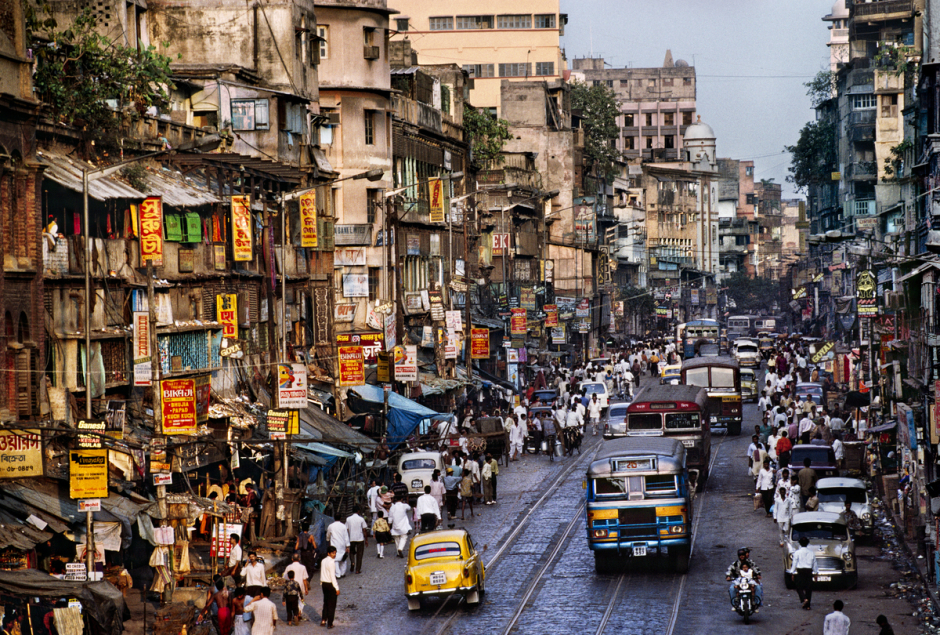KOLKATA, a West Bengal city bursting at the seams with a population of 15 million, is a raucous showplace of British colonial architecture and history.
More than 300 years ago, an ambitious British merchant, Job Charnock, established a small trading post on the banks of the Hooghly River for the East India Company. The fort became the anchor of the British empire in India, which lasted from 1757 to 1947.
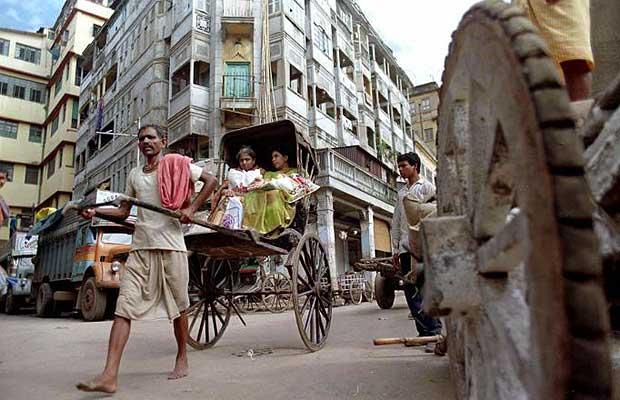
Known as Calcutta until 14 years ago, it was India’s commercial and intellectual hub for decades. But incensed by its role in India’s struggle for independence, the British moved the capital to New Delhi in 1911. Despite its precipitous loss of status, Kolkata never really lost its vital place in British India, the Raj, due, in part, to its collection of grand buildings.
The Victoria memorial, inaugurated by the Prince of Wales, is probably the most awesome reminder of this bygone period. An Italian Renaissance white marble pile of cupolas, columns and turrets, framed by imposing statuary in a tranquil park-like setting, the Victoria Memorial is a museum of memorabilia devoted to the European presence in India.
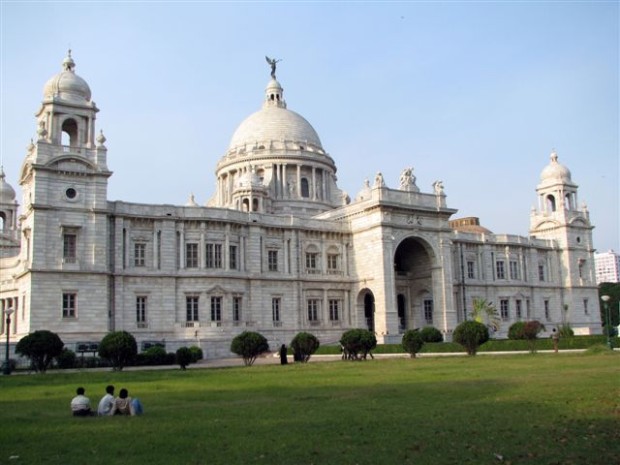
The Portuguese, the first Europeans to settle in India, were followed by the British. By the 19th century, Kolkata was a thriving, cosmopolitan melting pot. Among its residents were Jews from Iraq — the so-called Baghdadis — and Chinese from Canton.
A major magnet for local and foreign tourists, the Victoria memorial is adjacent to the Maidan, the lungs of Kolkata. This green space, three kilometres in length and more than one kilometre in width, attracts walkers and joggers, and is a welcome refuge from Kolkata’s non-stop hustle and bustle.

St. Paul’s Cathedral, rising majestically at the southern end of the Maidan and enclosed in a pleasant garden trilling with birdsong, is another marker of the British era. Finished in 1847 and rebuilt in 1934, following an earthquake, St. Paul’s commemorates a panoply of British administrators who governed Kolkata in the heyday of the Raj.
In high-flown language on a plaque, Sir Henry Mieves Elliot, who died in 1853 at the age eof 45, is lauded for his “remarkable abilities and attainments” and his “manly rectitude and conduct.” Another plaque honors Thomas Edward Bristow Judge, who died of drowning “by the upsetting of a boat” on the Hooghly River on Sept. 6, 1862.
On the weedy and neglected grounds of St. John’s Church, a crumbling edifice built in 1787, an octagonal mausoleum pays tribute to Charnock, the visionary trade who foresaw Kolkata’s potential as a citadel of commerce.
British influence in Kolkata is also recalled by the abundance of red-brick buildings. One of the most outstanding of the lot is the Writers’ Buildings, where armies of lowly clerks in the employ of the East India Company toiled in anonymity.
Kolkata’s signature landmark, the cantilevered Howrah Bridge, spans the muddy Hooghly River.
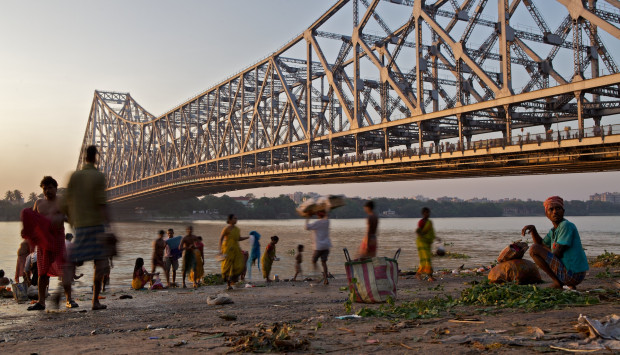
The sidewalk leading to the bridge is congested with fruit and vegetable vendors, their brightly colored wares laid out neatly on mats. Amid the constant flow of cars and trucks belching clouds of stinging fumes, pedestrians hurry to the other side of the bridge, while impossibly slim, perspiring and half-naked porters balancing boxes on their heads lurch forward in an uneven procession.
Directly beneath the bridge is a vibrant flower market, which is best seen in the early morning. The fragrance of flowers mingles with the whiff of raw sewage and urine. In dark huts, carpenters make crates out of plywood. Mangy stray dogs wander around, sniffing for morsels of food.
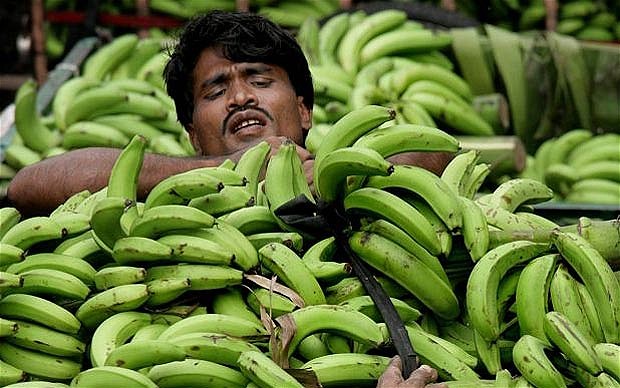
The Mechua outdoor fruit and vegetable market, the largest in Kolkata, sits in the shadow of the Nakhoda mosque, a noble testament to Islamic architecture. Vendors, their legs folded on beds of fresh straw, sell grapes from madras, oranges from Nagpur, apples from Kashmir, bananas from Kerala and sweet limes from Maharashtra. Still other retailers in hole-in-the-wall shops dispense sticky dried dates from Turkey.
Fabrics, porcelain, oven ware, handicrafts and food products are the specialties of the New Market. Among its maze of outdoor shops is Nahoum & Sons Bakery, which was owned by David Nahoum, one of the last remaining Jews of Kolkata, until his death in 2013.
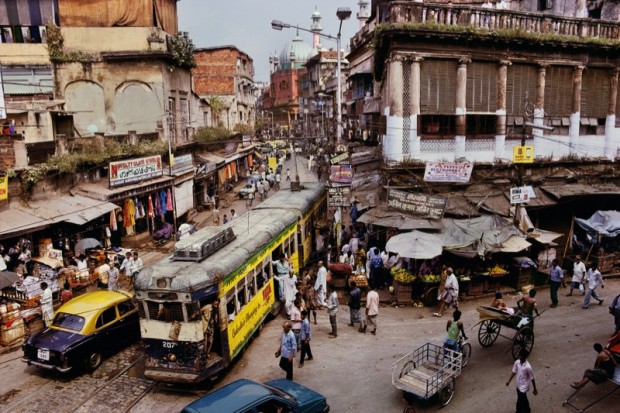
Kolkata’s Chinatown, with its shops, restaurants, temples and schools, swarms with pedestrians and hand-pulled pedicabs.
The Kali temple, in a red light district of southern Kolkata, offers visitors a chance to witness the gory spectacle of daily animal sacrifices to Hindu gods. One steamy afternoon, two small black goats, garlanded with red floral wreaths and anointed with water, were led to a chopping block. A sweating man beheaded the poor, unsuspecting beasts with one clean stroke of a curved dagger.
Mother Teresa’s Home for the Sick & Dying Destitutes is steps away. The sight of fatally ill patients, clad in blankets, still clings to my memory,
The homeless masses of Kolkata, numbering a million by one estimate, live under bridges, in front of public buildings and wherever they can find a place to rest their heads.
I met a homeless family near St. Paul’s Cathedral. The husband collects discarded newspapers and earns about $1 a day. The wife, her discolored buck teeth peeking out of her mouth, looks after their children. Their oldest child, a smiling girl of about 12, said she hopes to be a house maid. Among Kolkata’s desperately poor, domestic service is still regarded as an upwardly mobile step to a better life.
